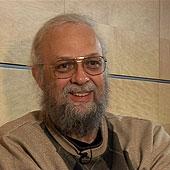Joan Eleanor Tarbox, Paul Laurence Scrivener, Giorgio Grasso
Optical amplifier
Calling Long Distance
Three researchers, namely Joan Eleanor Tarbox; Laurance Paul Scrivener, and Giorgio Grasso transformed trans-oceanic communication with their invention of Erbium-doped fibre amplifiers, or EDFAs.
An optical amplifier is a device for boosting the strength of signals in optical fibres, which send data using pulses of light. EDFAs allow an optical pulse to travel hundreds of miles before electrical regeneration is required. Prior to this invention, amplifiers, or repeaters, for optical fibres needed to swap the data from an optical signal to an electrical signal back to an optical signal again. This incurred high maintenance costs and affected reliability, particularly as these electronic repeaters were often installed at the bottom of the ocean.
The invention, patented in 1993, adds small quantities of the rare-earth element Erbium to a loop of specially designed optical
fibre, through which the light signals travel. This process of introducing small amounts of another element is called doping. These fibres can be used to amplify light signals in the wavelength band from 1530nm to 1625nm, when pumped by a higher-frequency external light source running parallel to the data signal within the fibre.
The three researchers’ discovery has considerably reduced the cost and complexity of trans-oceanic communication and marked a major improvement over previous method.
The addition of erbium to optical fibres was a completely novel idea, which enjoyed immediate success. Milan-based industrial company, Pirelli & C. SpA, made its first EDFA sales in 1993, combining its optical fibre technology with research conducted by the optoelectronics research centre of Southampton University in the UK. Thereafter, Pirelli installed optical amplifier and Wavelength Division Multiplexing systems in five continents.
The technology changed hands in 1999, when Cisco bought Pirelli Optical Systems for $2.5 billion and sank $100 million into the Pirelli Cables and Systems optical components business. In September 2000, Corning pledged to pay about $3.6 billion to buy 90 percent of Pirelli's optical components business from Cisco. And in October 2000, Corning bought the remaining 10 percent.
Tarbox’s, Scrivener’s and Grasso’s work has helped extend today’s high-speed optical infrastructure and make huge amounts of bandwidth available at low cost over very long distances. The rapid deployment of optical amplifiers is being driven by the tremendous growth of data being transferred over the Internet.
The growth of Wavelength Division Multiplexing systems, or DWDM, is also fuelling demand for EDFAs. DWDM is an innovative technology that uses different frequency light waves in parallel to dramatically increase the capacity of broadband networks, which today carry a combination of phone, Internet, and video traffic. EDFAs are also employed for private data communications, cable TV and for military communications.
According to ElectroniCast, an industry analyst firm, the total optical networking market was estimated to be over $34 billion in 2005 while the global consumption of optical fibre amplifiers increased from $2.65 billion in 2000 to over $3.4 billion in 2005. The worldwide use of selected specialty optical fibre in communication products, including amplifiers will grow to $4.38 billion by 2010, ElectroniCast predicts.
Contact
European Inventor Award and Young Inventors Prize queries:
european-inventor@epo.org Subscribe to the European Inventor Award newsletterMedia-related queries:
Contact our Press team#InventorAward #YoungInventors



